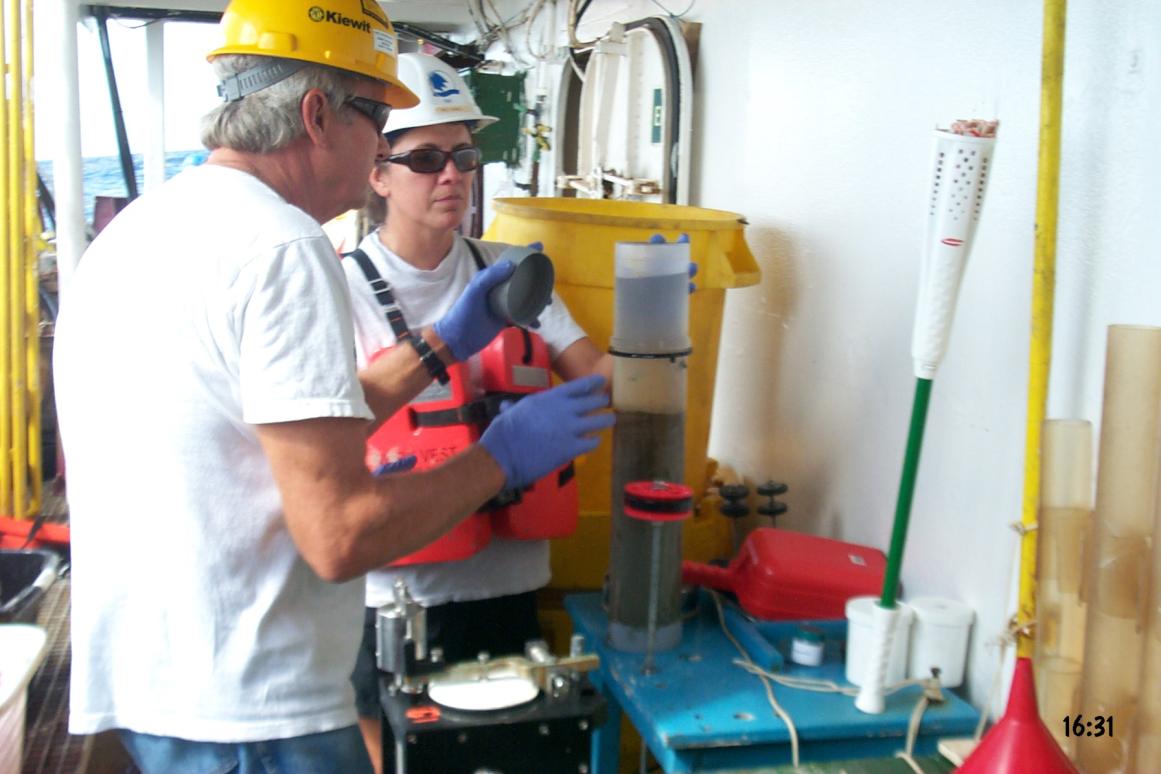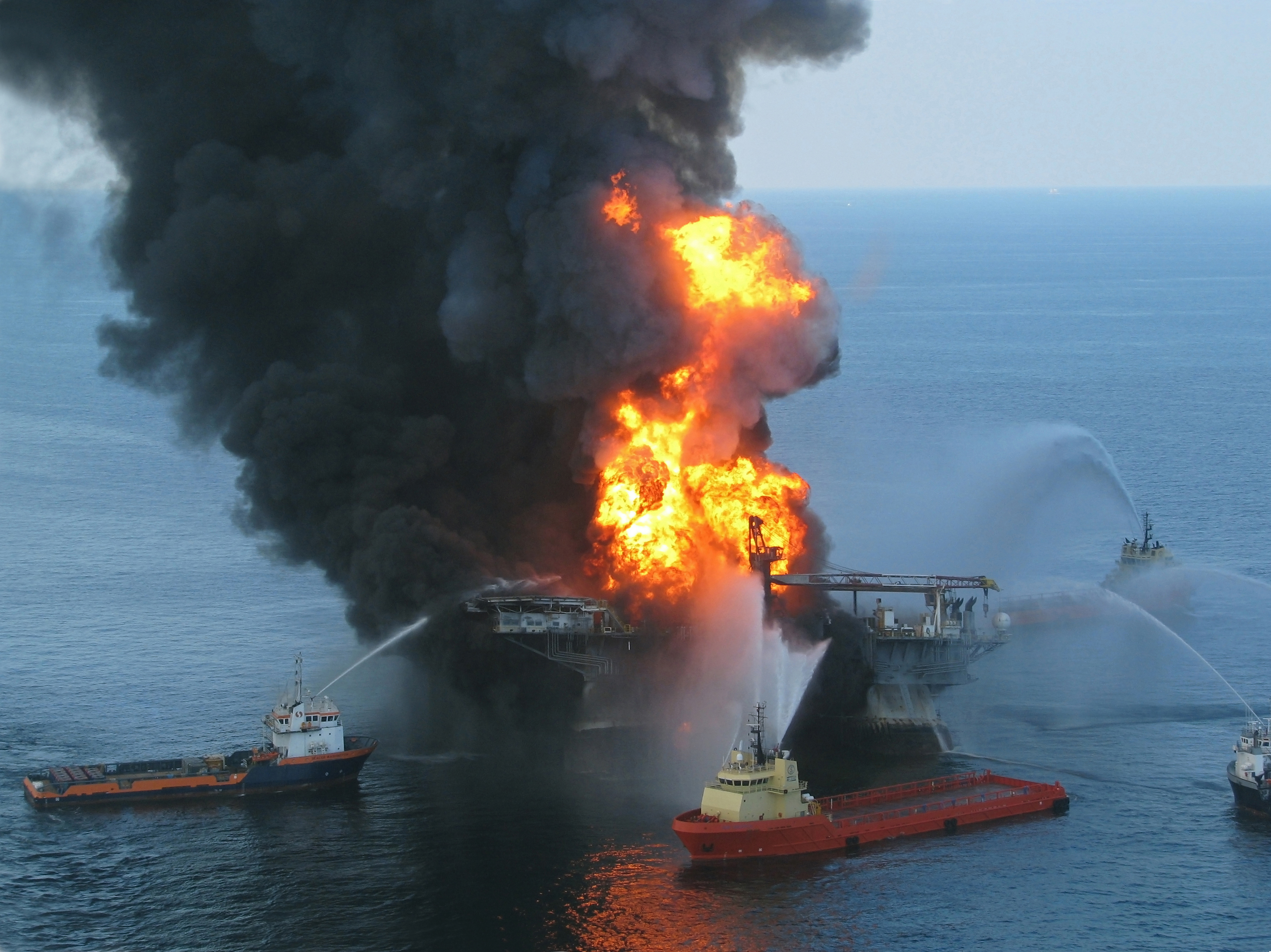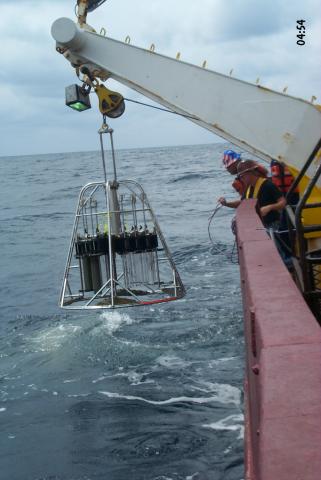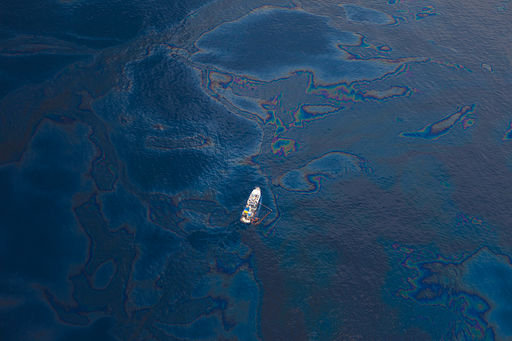When the Oil Settled, the Science Rose: HRI and the Deepwater Horizon Legacy

This is part of a series of stories looking at the history and impact of HRI over the last 25 years.
The executive conference room on the third floor of the Harte Research Institute building is approximately 384 square feet and features a panoramic view of Corpus Christi Bay.
Less than a week after April 20, 2010, this space was filled with HRI program leaders and top researchers.
Inside the conference room, overlooking the waters of the bay, HRI Senior Executive Director Larry McKinney began a meeting that shaped the institute for the next generation. At the time, HRI was less than a decade old and only two years from being fully staffed but was faced with a new challenge.
The Deepwater Horizon explosion and oil spill was a stark reminder of how quickly the Gulf’s health — and the livelihoods it supported — could be thrown into chaos.
“I sat everybody down in the conference room and asked, ‘Who has experience with oil spills?’” recalled McKinney, now retired.
One by one, several spoke up:
Jim Gibeaut, HRI’s Endowed Chair for Geospatial Sciences, had worked on the Exxon Valdez cleanup in the late 1980s and early 1990s.
Paul Montagna, HRI’s Endowed Chair for Ecosystems Studies and Modeling, collaborated with federal regulators of the offshore oil and gas industry during his career and recently completed deepwater baseline studies.
Wes Tunnell had been involved in the response to Mexico’s 1979 Ixtoc oil spill.
McKinney, meanwhile, led oil spill response for TPWD during his tenure there and was the state’s first National Resource Damage Assessment (NRDA) trustee.
Those scratched the surface of HRI’s expertise.
“Over 100 years of experience with oil spills, response, and restoration,” McKinney said. “That’s when we realized we had something to contribute.”
He also knew those without direct oil spill experience could contribute valuable science and information to the Gulf’s recovery because they were the best and the brightest at what they did. More than 15 years later, the effects of Deepwater Horizon are still felt along the coast.
“For a lot of us, it changed the trajectories of what we were doing,” said Montagna, who is now HRI’s Endowed Chair for HydroEcology. “We quickly realized, ‘Geez, none of us were hired because we were oil guys, right?’ Yet we understood we had a lot of capacity here to work on these issues.”

An all-around effort
McKinney and Montagna learned of the explosion from news reports the morning after it happened, and Gibeaut said colleagues from his time in Alaska reached out as well. McKinney soon received calls for help from former co-workers at the Texas Parks and Wildlife Department, while Montagna and Gibeaut were contacted by media outlets for comment.
HRI leaders quickly worked through a “worst-case scenario” for the Gulf, both ecologically and economically, something only HRI could do because of its unique makeup. McKinney issued an 800-word press release and multiple opinion pieces to highlight the seriousness of the disaster. This proactive move drew attention across the Gulf and beyond, and McKinney began directing inquiries to HRI chairs who could provide expertise.
“We were one of the first to help people realize that this was more than just an oil spill,” McKinney said. “This was completely different, and it wasn’t anything we had dealt with before.”
He asked chairs to prepare “brief oil spill résumés” outlining their expertise to expand HRI’s reach.
Gibeaut said the initial focus was on oil rising to the surface and its immediate impact, but over time it became clear oil was also sinking to the ocean floor, revealing the true scale of the disaster.
That summer, once the well was capped, Montagna was invited to design an initial research cruise to measure how much oil was in the Gulf — just one example of HRI’s early and lasting involvement.
“It did have a giant surface expression and thousands of kilometers were oiled in Mississippi, Alabama, Louisiana, and the Panhandle of Florida,” said Gibeaut. “There was a lot of oil deposited on the shorelines. Really, my experience from the Exxon Valdez was the shoreline oiling problem. We had it covered — with Paul in the deep ocean, and myself with the shoreline impacts, including how you survey to clean things up and make those decisions.”
The spotlight soon followed. McKinney recalled television trucks from outlets such as Fox News and Al Jazeera parked outside HRI in the early days, reinforcing its reputation as a trusted source of information.
“Wes (Tunnell) and I talked a lot, and we came to the realization that this is what HRI was designed to deal with,” McKinney said. “HRI isn’t your typical marine institute. We had biologists and chemists, but also economists and attorneys and as importantly they worked well together. We were in the right place at the right time to bring it all together.”

Landmark achievements
The institute helped set baselines for long-term monitoring studies and became a key player in the Gulf of Mexico Research Initiative (GoMRI), which was created to fund independent scientific research on the full impact of the spill.
Over the following years, multiple HRI scientists contributed to various aspects of the spill response and recovery, and the institute through its studies and science played an important role in the final BP monetary settlement. Through shoreline restoration, deepwater benthic studies, and extensive data collection as examples, HRI remains an important part of the restoration effort.
“I really have to give this to Larry, and to a large extent Wes,” Montagna said. “They knew how to seize that opportunity to benefit HRI. They helped influence the RESTORE Act — how it was created and how it was run. There was political work to be done, not just to promote the Gulf, but to say, ‘Hey, we don’t need people from all over the world coming in to do this … we have the expertise right here.’”
What’s the legacy?
The scientific record is clear — papers, studies, and data from Montagna, Gibeaut, Tunnell, and others document HRI’s role.
That includes Montagna’s extensive work on benthic species in the deep ocean, Gibeaut’s work on shoreline restoration, and the establishment of GRIIDC as a key repository for data collected during restoration.
“In my career at HRI, Deepwater Horizon tracked from beginning to end,” McKinney said. “We worked with just about everyone from BP to NOAA, USGS, EPA, BOEM and the National Academies of Science — basically every federal agency and organization with responsibility for offshore oil and gas development or environmental response.”
Beyond science, the spill was a turning point for HRI as an institution. It highlighted the strength of its multidisciplinary model and validated founder Ed Harte’s vision.
“Once GoMRI was formed, that brought the Harte Research Institute into collaboration with all the other Gulf marine science labs, and thousands of researchers in this broad collaboration,” Gibeaut said. “That really had an impact on our reputation and visibility in the research community.”
Montagna concluded: “We had a lot of people who were not only good scientists, but scientists who understood the importance of the environment and economics of the Gulf. The Gulf has value not just because of oil and gas, but because of its diversity. Not just because of fishing, but because of the diversity of fishes. Having that expertise all in one place … it was the right people, in the right place, at the right time.”

Highlights of HRI’s Deepwater Horizon work
• Research conducted by HRI scientists was a key component in the creation of the RESTORE Act. Passed in 2012, the Act directed 80% of the civil penalties from the Deepwater Horizon disaster to Gulf Coast restoration, providing the framework for distributing funds from BP’s $20.8 billion settlement in 2015. HRI experts served on advisory panels and research groups that helped shape restoration priorities along the coast and throughout the Gulf.
“I think a legacy is the impact our work had on the ultimate settlement,” Gibeaut said. “All that scientific work done on natural resource damage assessment was very important for the trustees to fund and go forward with that so they could hold BP’s feet to the fire when it came down to it.”
• Through the establishment of the Gulf of Mexico Research Initiative (GoMRI) by BP, the Gulf of Mexico Research Initiative Information and Data Cooperative (GRIIDC) was created. Led by Gibeaut, the team developed a data management system to handle the enormous flow of information collected after the spill. Today, it continues to promote data sharing and house scientific data from across the world.
“A really key thing was making sure we had a protocol, a framework — like GRIIDC — to bring all the researchers together and get their data in place,” Gibeaut said. “We weren’t really used to that. Some were, but most were not used to sharing their data. We really pushed the envelope for the whole nation on that.”
• The Texas OneGulf Center of Excellence was created as one of the first RESTORE Centers of Excellence in the nation to receive an award from the U.S. Treasury. The center brings together experts from multiple disciplines and state institutions to provide a comprehensive picture of the spill’s impact.
• Montagna’s research on benthic species on the ocean floor was groundbreaking and played a key role in understanding how long it would take the Gulf’s seabed to recover after the spill. Benthic sampling is a critical indicator of ecosystem health. Montagna also applied a new method of collecting smaller samples at more locations across the Gulf, providing a broader view of the spill’s effects. His work determined that it could take nearly 50 years for the Gulf’s sediments to fully recover.
• Gibeaut’s research on shoreline damage and assessment helped set standards used by state and federal agencies to evaluate coastal impacts, guiding restoration planning and response strategies.
Read more on HRI's 25th Anniversary
